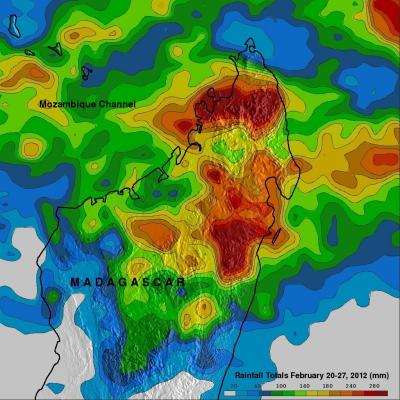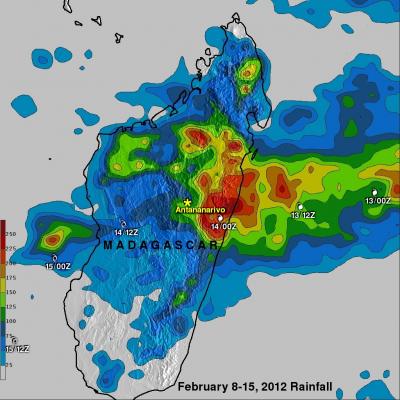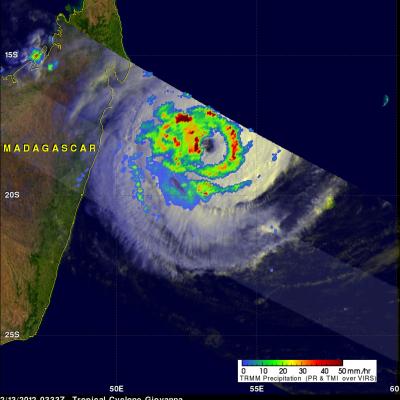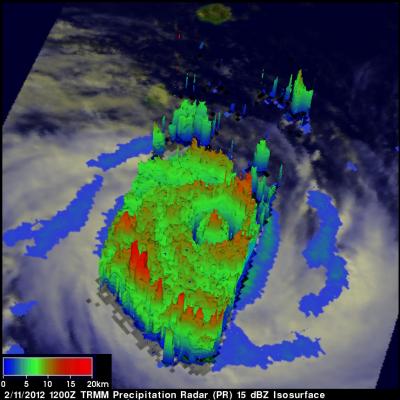More Flooding Rainfall In Madagascar
A weak tropical cyclone locally called Irina caused flooding over northern Madagascar less than two weeks after deadly flooding by Tropical Cyclone Giovanna . The lastest tropical cyclone didn't have very strong winds when it passed over the coastal city of Vohemar on Madagascar's northeastern coast but street flooding was reported. The rainfall analysis above was made at the Goddard Space Flight Center using data from a near-real time Multi-satellite Precipitation Analysis (TMPA). TRMM-based near-real time Multi-satellite Precipitation Analysis (TMPA) data are used to monitor rainfall over





